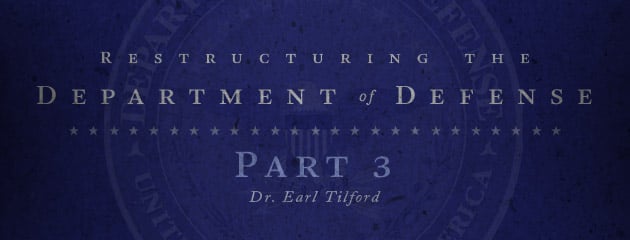
Editor’s note: This article is Part III in a series. Click here to read Part I & Part II.
Armed forces, and the way they fight, reflect national cultures. That means that the United States will have the kind of military the people, through their elected representatives, want. And great nations like ours remain great only so long as they can defend their national interests.
Strategic threats must also be recognized. The foremost challenge is to meet threats from other top-tier nations. This means now, not tomorrow, as evidenced by Russia’s claim to 380,000 square miles of the Artic, a significant threat and challenge. Wars against second-tier powers with Cold War “legacy” system forces—supported by nuclear weapons in the case of North Korea and Iran—constitute another level of threat. Finally, the war against Islamist fundamentalist Jihadists, a “Ten Years’ War” that has depleted our forces and sapped national will, will continue. The United States must regain and retain the initiative.
A major challenge will be to devise appropriate strategies. National strategy guides military strategy. If national security strategy and its accompanying national military strategy are not appropriate to threats, the United States will be defeated. Short of annihilating the enemy, no amount of firepower, application of high-tech weaponry, martial courage, or effusion of blood can overcome flawed strategy. Enemy attacks in Iraq and Afghanistan have increased since the U.S. drawdown began. Additionally, the outpouring of concern over the recent death of 30 American service personnel in the Seal Team Six tragedy tells the enemy how sensitive we are to casualties. Their response will be to inflict as many American casualties as possible.
There are other challenges to reform. The most vehement opponents come from the far left (desiring a weaker U.S. military global posture) and from the libertarian right (wanting a reduced U.S. global posture). Additionally, pro-military conservatives must understand that advocating radical reform of DoD does not make one a leftist. The word “radical” doesn’t mean “far out.” Its Latin derivation is “root,” as in “radish.”
Placing the Air Force back within the Army will not diminish the strategic deterrent. Money saved from reducing bureaucracy can be used for much-needed nuclear modernization. There still will be a nuclear, strategic striking force, which will involve nuclear-delivery systems ranging from bombers to mini-vans. Forces operating in all elements, including special operations, can deliver nukes.
For the foreseeable future, heavy forces must remain in the equation. They are particularly apropos for second-tier threats emanating from nations like North Korea and Iran. Heavy forces would not be as useful in a war with China or Russia. Air, naval, space, and cyberspace will be the grand medium in first-tier warfare. The challenge in fighting terrorism is much more cerebral and requires patience.
Downsizing the Pentagon is imperative. A smaller, cyber-hardened facility at one of the D.C. military installations would eliminate the vast overhead needed to operate the Pentagon and take away the space that invites bureaucratic expansion.
Highly lethal, quick-strike forces like the Marine Corps and Army Ranger brigades will be the crown jewels of 21st-century warfare.
One objection to consolidation of military education is the purported need for each service to instill specialized skill sets in company-grade officers. That’s not the mission of service academies, and—having taught at one—I know that academies are more adept at acculturating and inculcating a sense of service-focused “professionalism” that feeds parochialism. Almost without exception, every newly commissioned officer (regardless of source of commissioning) receives specialized training before reporting to an operational unit. Placing all professional military education in Washington consolidates costs and allows for interaction with local universities and other federal agencies involved in national security, such as the CIA, NSA, and FBI.
Opponents of radical restructuring will include the Air Force Association, Association of the U.S. Army, and the Navy League. These lobbyist groups are dedicated to sustaining and supporting individual service prerogatives.
However, radical reformation must take place as quickly as possible and also be considered thoughtfully. Time is growing short. Our enemies are preparing and, in fact, are already moving to take advantage of our perceived weakness. We have, maybe, five years to make substantial progress.
Restructuring involves cutting the shaft to extend a sharper blade. That means civilian force reductions, installation closures, and financial pain. It also requires that uniformed service members extend their careers to 25 to 40 years. The result will be a leaner, less expensive, and more highly integrated force ready to meet the three-tiered challenges of 21st-century warfare.


